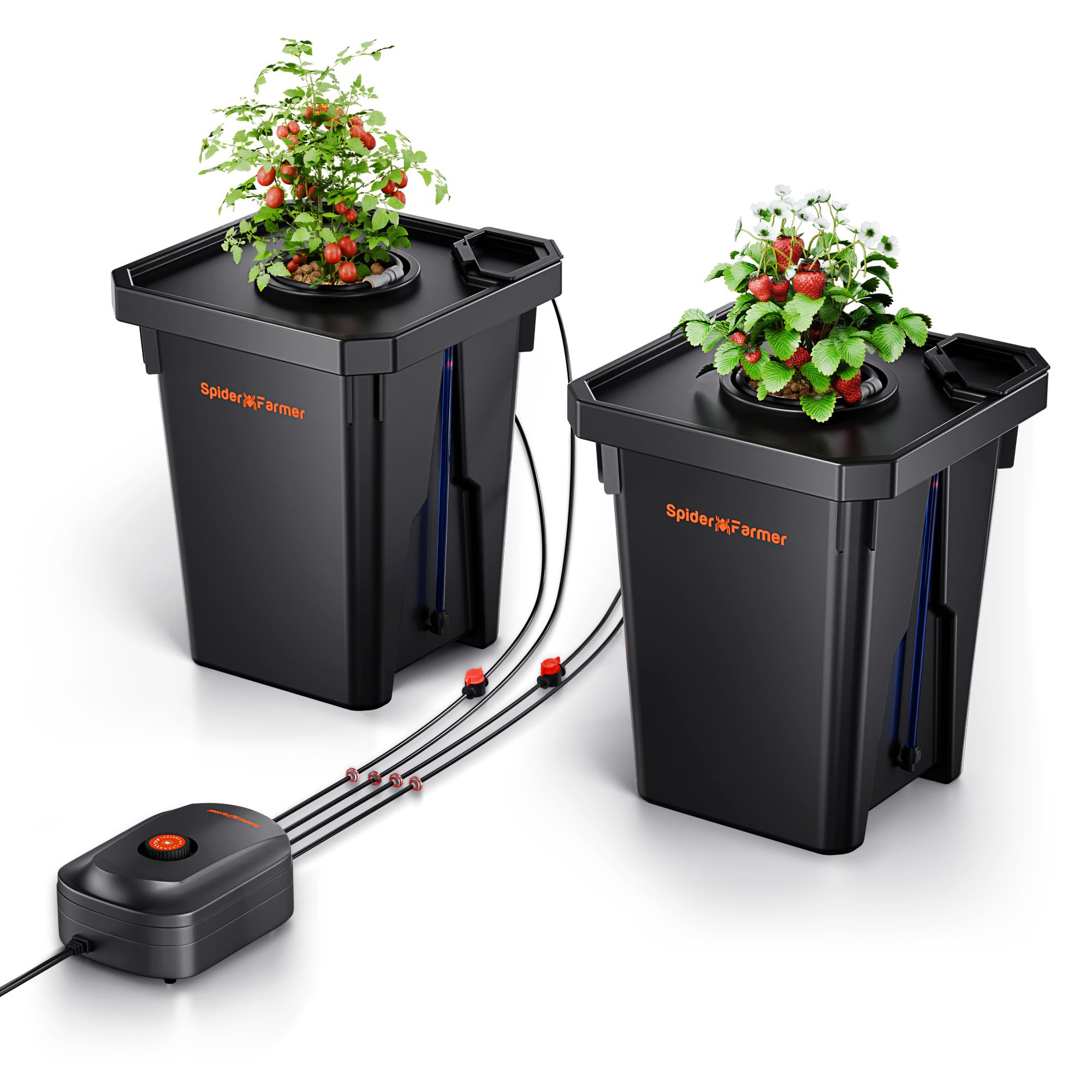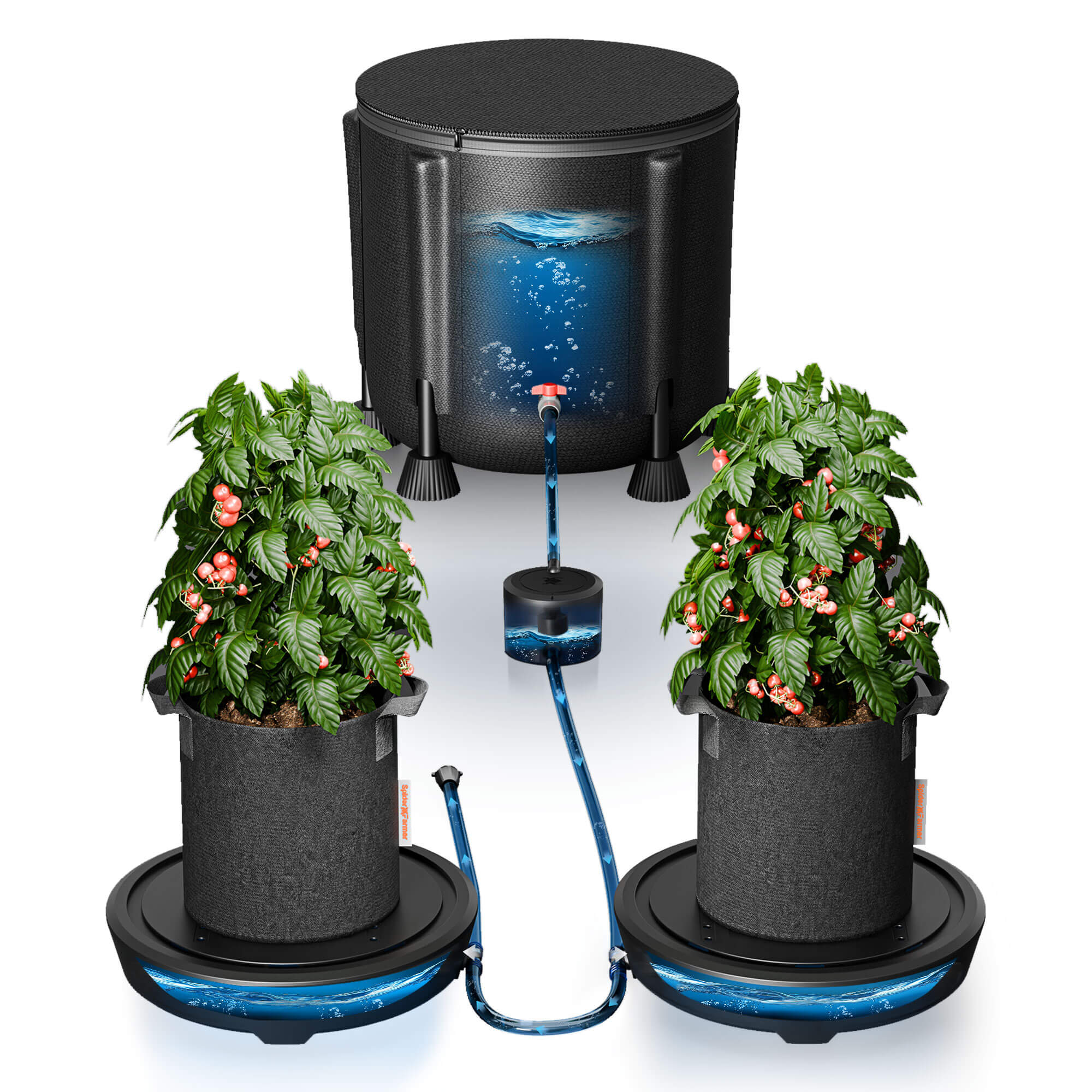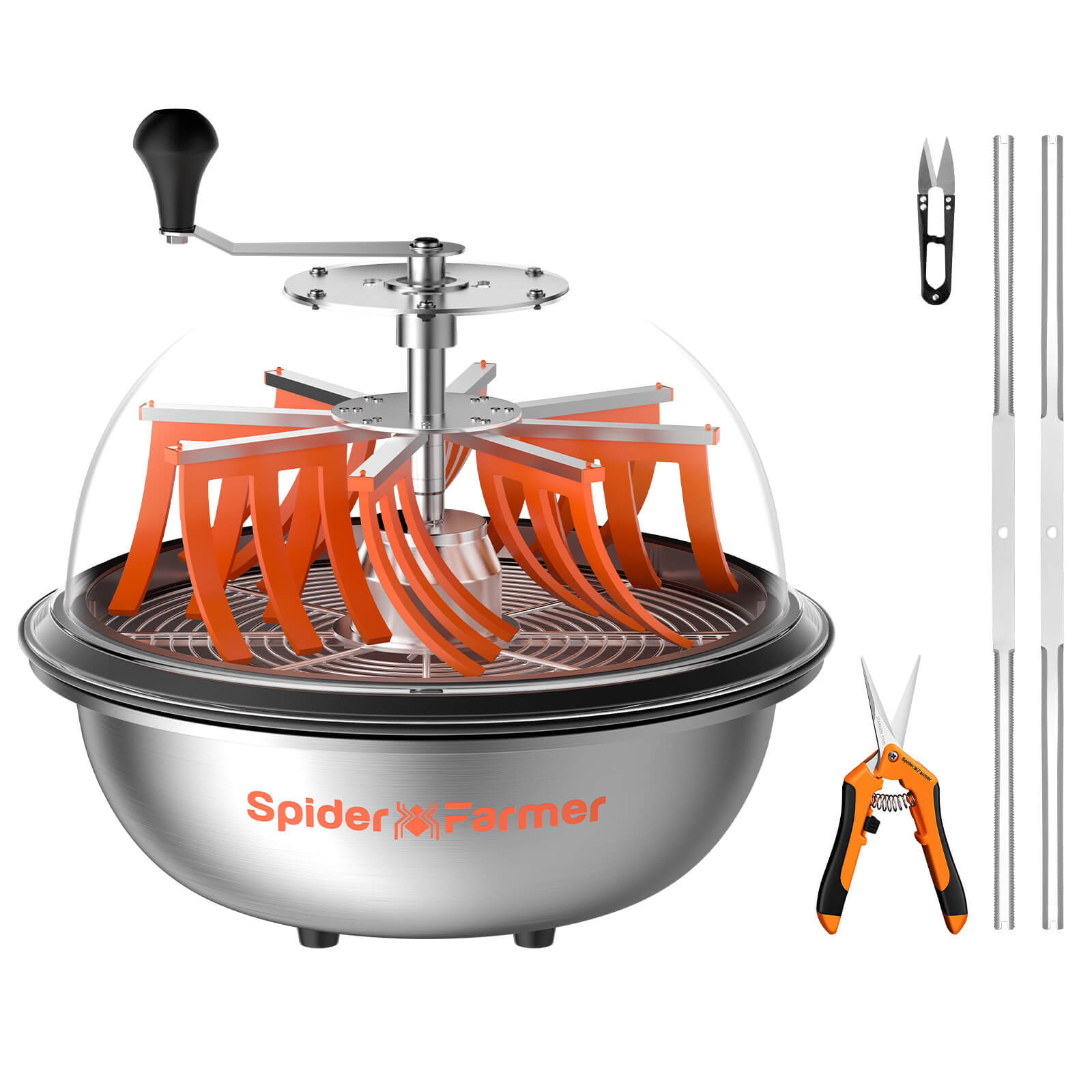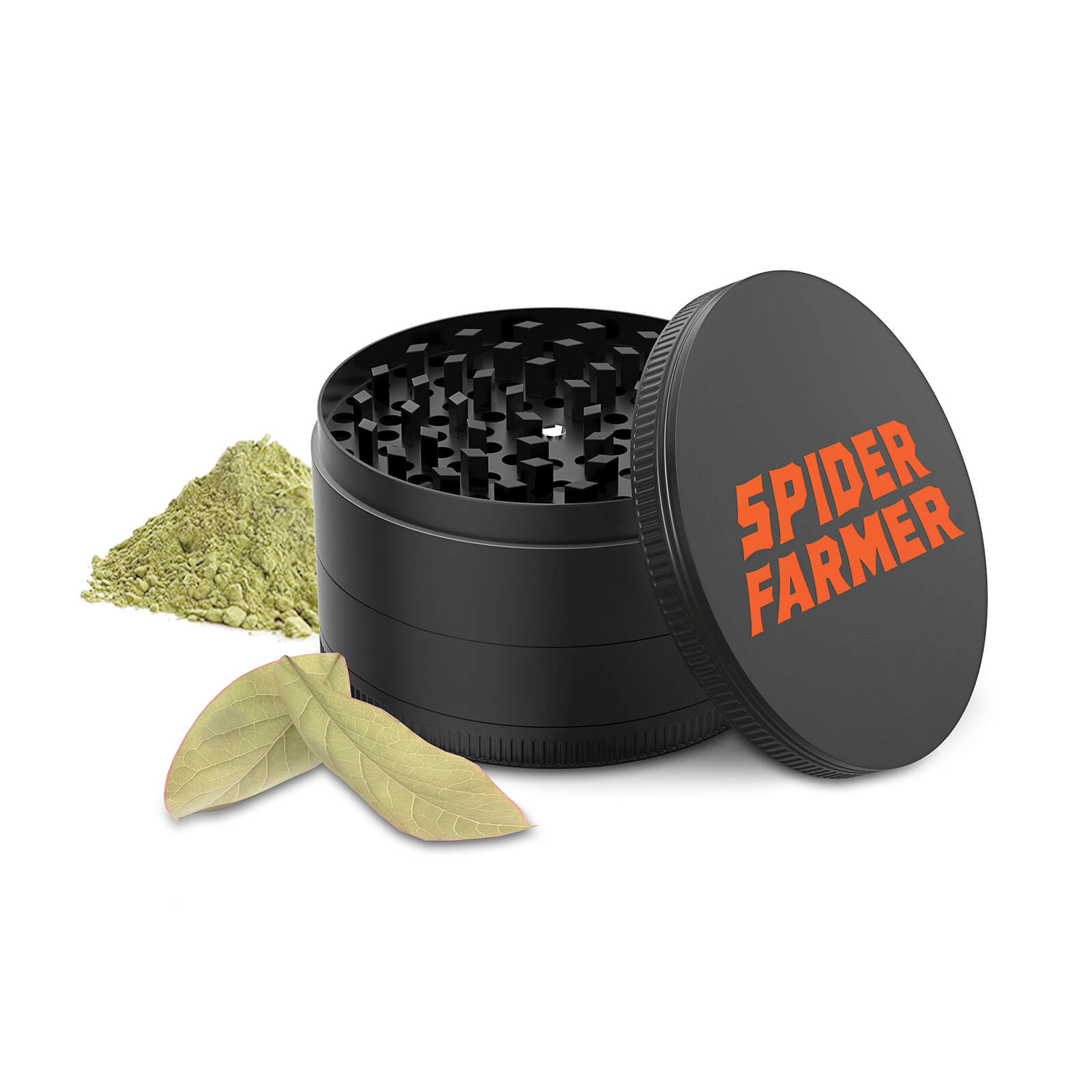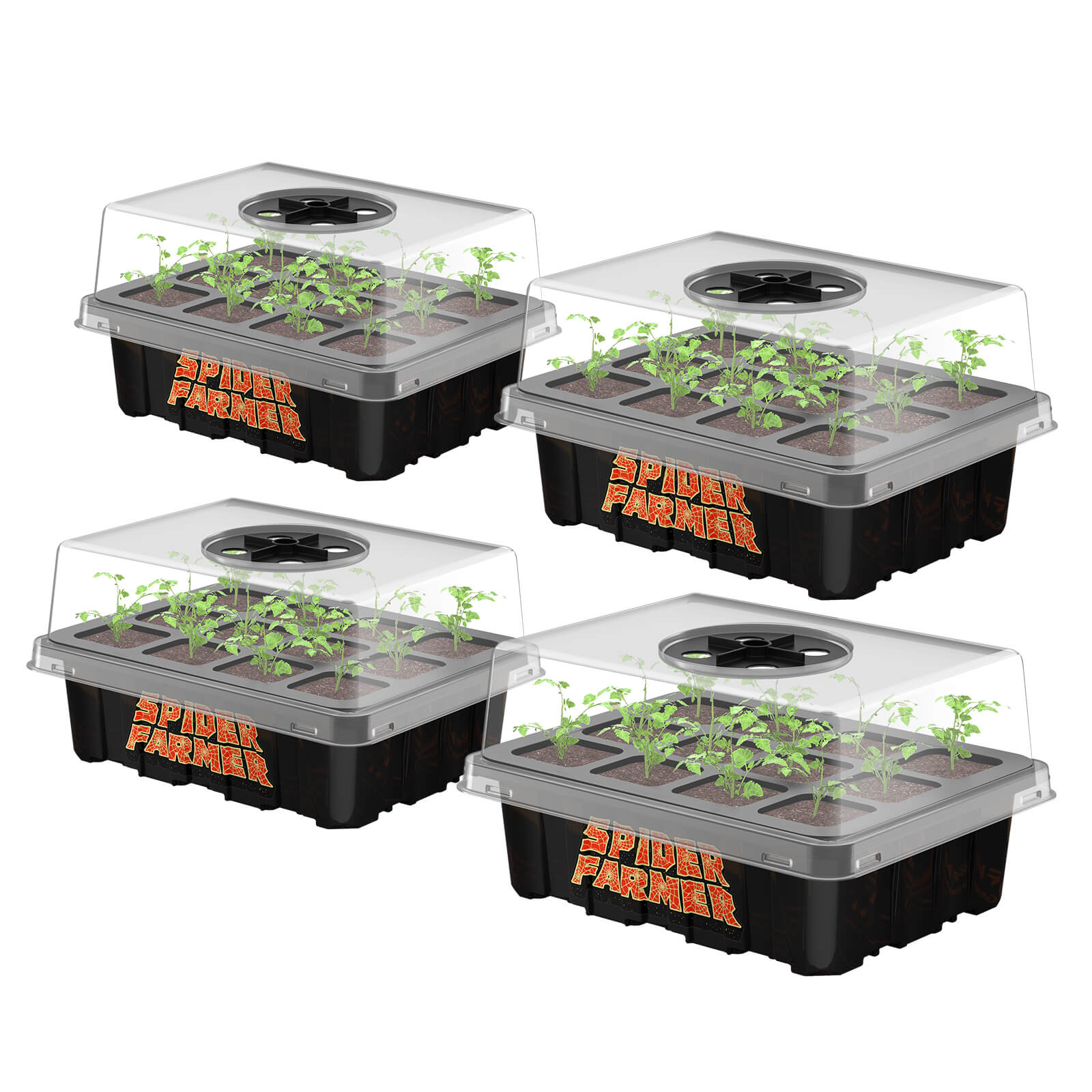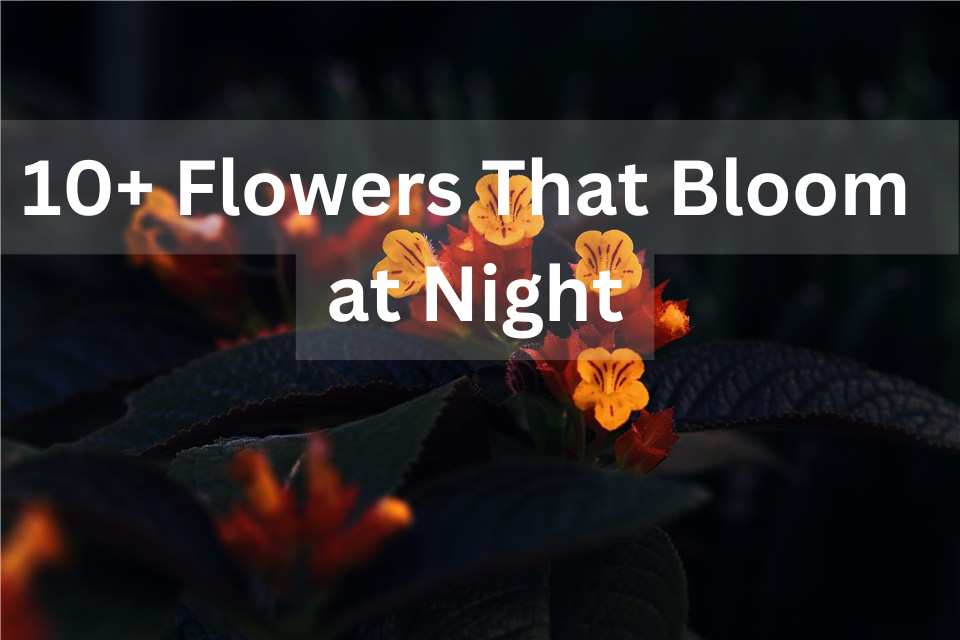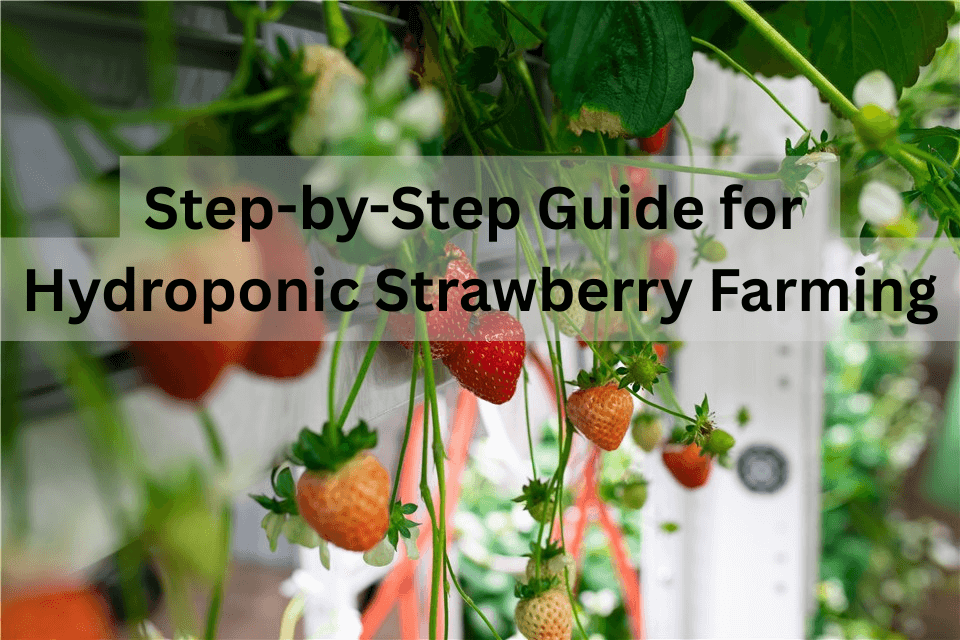As the sun sets and the world around us grows quiet, a magical transformation occurs in the garden. While many flowers rest, a group of night flowering plants awakens, unfurling their petals and releasing their intoxicating fragrances under the moon's gentle glow.
These nocturnal beauties offer a unique and enchanting experience, turning your garden into a mystical haven after dark. From the ethereal Moonflower to the captivating Night-Blooming Cereus, these plants bring a touch of romance and wonder to any landscape. Join us as we explore 10+ night flowering plants that will transform your garden into a moonlit paradise, inviting you to experience the beauty and tranquility of nature at its most serene.
Table of Contents
What Is Blossom at Night?
The “blooms at night” refers to the phenomenon of certain flowers that open their petals and release their fragrance after sunset. These nocturnal blooms often attract nighttime pollinators such as moths and bats with their sweet scents and bright colors. Examples of night-blooming flowers include the Queen of the Night, Evening Primrose, Moonflower, and Tuberose. In Japan, the term "yozakura" specifically refers to the nighttime viewing of illuminated cherry blossoms, which creates a magical and romantic atmosphere.
What Flower Only Blooms at Night?
Moonflower
The Moonflower is a night-blooming vine known for its large, white, trumpet-shaped flowers that open at dusk and emit a sweet fragrance. Native to tropical regions, this plant is a favorite for its romantic and ethereal appearance. Moonflowers thrive in full sun to partial shade and require well-drained soil. They are easy to grow and can be trained to climb trellises or fences. The flowers attract nocturnal pollinators like moths and bats.

Flowers that Bloom at Night - Moonflower
- USDA Zones: 10-11
- Size: 10-15 feet tall x 3-5 feet wide
- Bloom Time: Summer to fall
- Growing Conditions: Full sun to partial shade; well-drained soil; moderate watering
Evening Primrose
Evening Primrose is a biennial plant with bright yellow flowers that bloom at dusk and close by morning. Native to North America, it is known for its hardiness and ability to grow in various soil types. The flowers attract moths and other nocturnal pollinators. Evening Primrose prefers full sun and well-drained soil, and it is drought-tolerant once established.
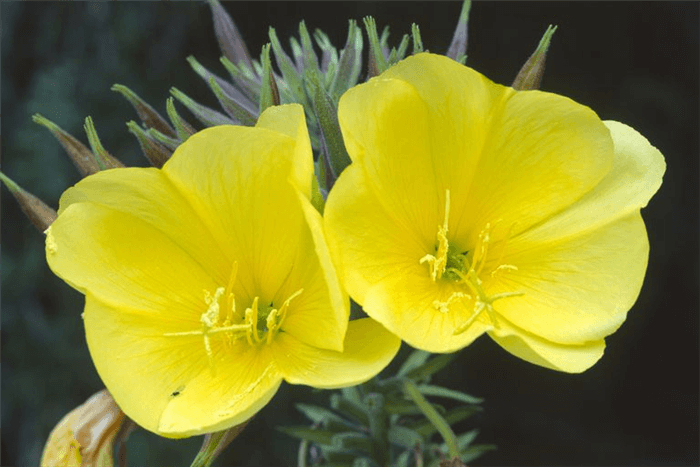
Flowers that Bloom at Night - Evening Primrose
- USDA Zones: 3-8
- Size: 3-5 feet tall x 1-2 feet wide
- Bloom Time: Summer
- Growing Conditions: Full sun; well-drained soil; low to moderate watering
Tuberose
Tuberose is a fragrant, night-blooming perennial. It’s a white flower that blooms at night, known for its clusters of waxy, white flowers that release an intoxicating scent. Native to Mexico, it is a popular choice for gardens and floral arrangements. Tuberose thrives in full sun and well-drained soil, and it requires regular watering during the growing season. The flowers are highly sought after for their romantic and exotic fragrance.
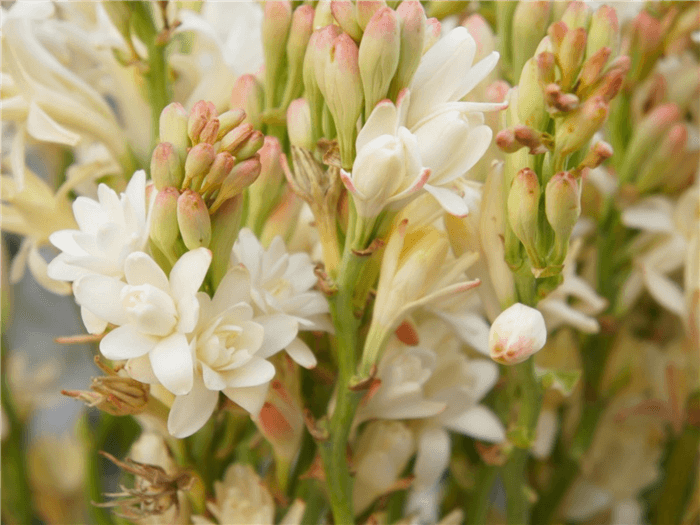
Flowers that Bloom at Night - Tuberose
- USDA Zones: 8-10
- Size: 2-3 feet tall x 1-2 feet wide
- Bloom Time: Summer to fall
- Growing Conditions: Full sun; well-drained soil; regular watering
Brahma Kamal
Brahma Kamal is a sacred flower in Indian culture, known for its night-blooming habit. Native to the Himalayas, this perennial produces large, white flowers that open at night and emit a sweet fragrance. It is often found in alpine meadows and prefers cool, moist conditions. Brahma Kamal is a symbol of spiritual significance and is used in religious ceremonies.
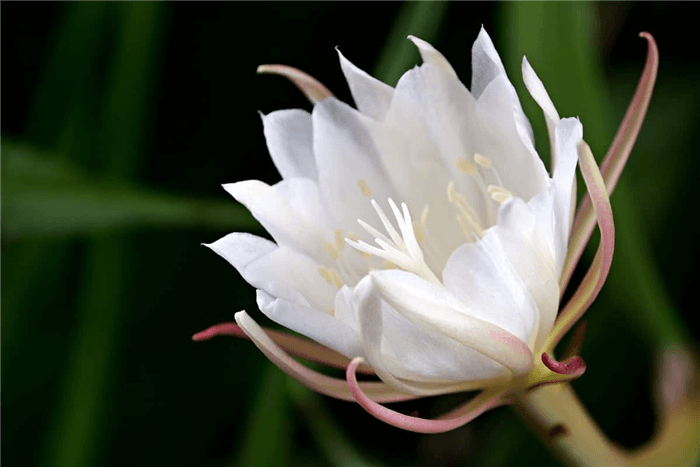
Flowers that Bloom at Night - Brahma Kamal
- USDA Zones: 3-8
- Size: 1-2 feet tall x 1-2 feet wide
- Bloom Time: Summer
- Growing Conditions: Full sun to partial shade; well-drained, moist soil; moderate watering
Casa Blanca Lily
The Casa Blanca Lily is a popular hybrid. This white flower that blooms at night opens in the evening and emits a captivating fragrance. Native to the Mediterranean, it is a favorite for its elegant appearance and strong scent. Casa Blanca Lilies thrive in full sun to partial shade and require well-drained soil. They are often used in gardens and floral arrangements for their beauty and fragrance.

Flowers that Bloom at Night - Casa Blanca Lily
- USDA Zones: 4-9
- Size: 3-4 feet tall x 1-2 feet wide
- Bloom Time: Summer
- Growing Conditions: Full sun to partial shade; well-drained soil; regular watering
Night Phlox
Night Phlox is a small, night-blooming plant with star-shaped flowers that open at dusk and release a sweet, vanilla-like fragrance. Native to South Africa, it is known for its delicate appearance and strong scent. Night Phlox prefers full sun to partial shade and well-drained soil. It is a low-growing plant that is ideal for borders and containers.
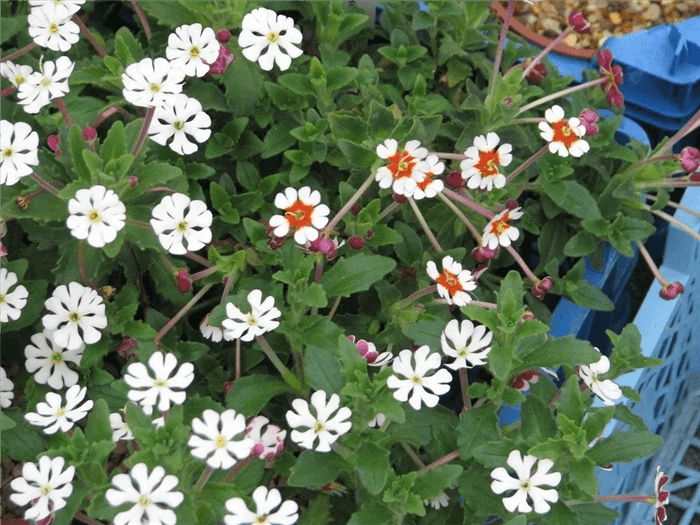
Flowers that Bloom at Night - Night Phlox
- USDA Zones: 10-11
- Size: 1-2 feet tall x 1-2 feet wide
- Bloom Time: Summer to fall
- Growing Conditions: Full sun to partial shade; well-drained soil; moderate watering
Four O’Clocks
Four O’Clocks are named for their habit of blooming in the late afternoon and continuing into the night. Native to South America, this plant features vibrant, trumpet-shaped flowers in various colors that emit a sweet fragrance. Four O’Clocks thrive in full sun to partial shade and require well-drained soil. They are easy to grow and attract moths and other nocturnal pollinators.
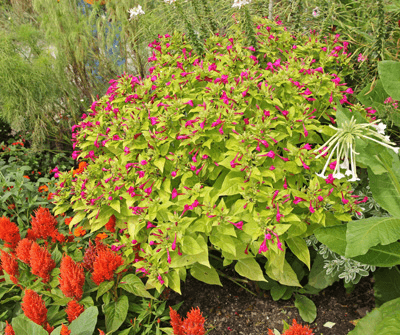
Flowers that Bloom at Night - Four O’Clocks
- USDA Zones: 9-11
- Size: 2-3 feet tall x 2-3 feet wide
- Bloom Time: Summer to fall
- Growing Conditions: Full sun to partial shade; well-drained soil; moderate watering
Evening-Flowering Catchfly
Evening-Flowering Catchfly is a delicate plant with small, star-shaped flowers that open at night and catch small insects. Native to Europe and Asia, it is known for its ability to attract nocturnal pollinators. Evening-Flowering Catchfly prefers full sun to partial shade and well-drained soil. It is a low-growing plant that is ideal for rock gardens and borders.
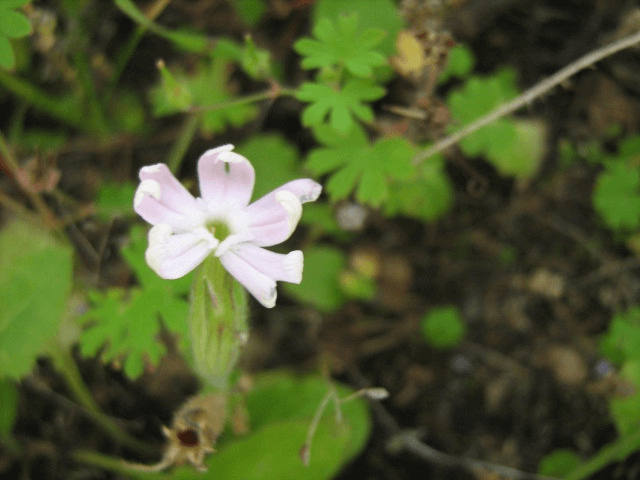
Flowers that Bloom at Night - Evening-Flowering Catchfly
- USDA Zones: 3-8
- Size: 1-2 feet tall x 1-2 feet wide
- Bloom Time: Summer
- Growing Conditions: Full sun to partial shade; well-drained soil; moderate watering
Red Flare Water Lily
The Red Flare Water Lily is a night-blooming variety known for its bright red flowers that open at night. Native to tropical regions, this aquatic plant thrives in warm, still water. The flowers are large and fragrant, attracting nocturnal pollinators like moths. Red Flare Water Lilies are ideal for ponds and water gardens.
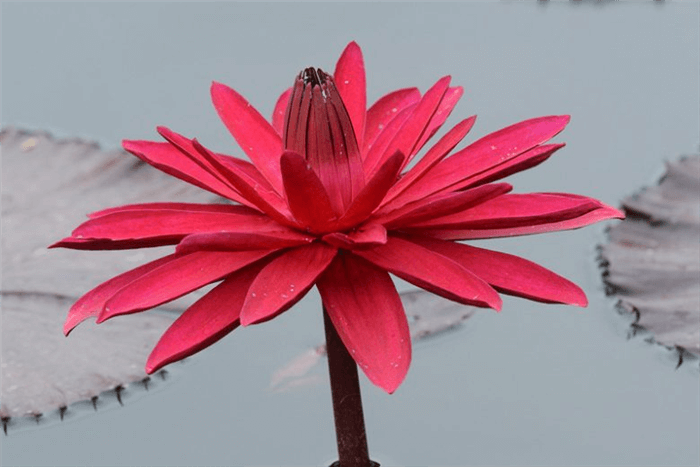
Flowers that Bloom at Night - Red Flare Water Lily
- USDA Zones: 10-11
- Size: 3-5 feet spread
- Bloom Time: Summer to fall
- Growing Conditions: Full sun; warm, still water; moderate watering
What Is the Flower that Blooms Once at Night?
These night flowering plants open in the evening and wilt by morning.
Queen of the Night Cactus
The Queen of the Night Cactus is also known as Dutchman’s Pipe Cactus. It is a stunning epiphytic cactus native to Central and South America. This nocturnal beauty produces large, fragrant flowers that bloom for only one night, typically in late spring or early summer. The flowers are pollinated by moths, which are attracted to their sweet scent and white coloration. This plant thrives in bright, indirect light with well-drained soil and can be grown outdoors in frost-free regions or as a houseplant in cooler climates. It is relatively easy to cultivate and is often prized for its dramatic blossoms, symbolizing love, mystery, and the fleeting nature of beauty.

Flower Blooms Once at Night - Queen of the Night Cactus
- USDA Zones: 10-11
- Size: 4-6 feet tall x 2-3 feet wide
- Bloom Time: Late spring
- Growing Conditions: Bright, indirect light; well-drained soil; moderate watering
Night-Blooming Cereus
The Night-Blooming Cereus is a member of the cactus family. It’s known for its large, fragrant flowers that bloom at night and always only for a single night. This plant is native to Central and South America and is often referred to as the “Queen of the Night.” The flowers are typically white or pale pink and emit a sweet, floral scent that attracts nocturnal pollinators like moths. It can be grown outdoors in tropical climates or as a houseplant in cooler regions.
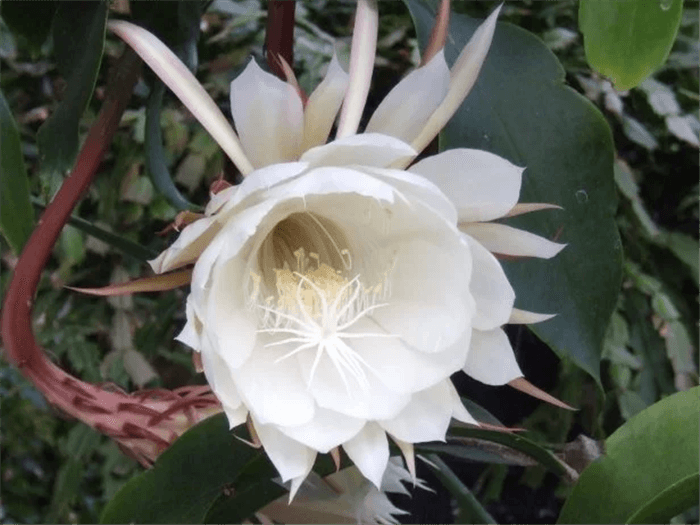
Flower Blooms Once at Night - Night-Blooming Cereus
- USDA Zones: 9-11
- Size: 4-6 feet tall x 2-3 feet wide
- Bloom Time: Late spring to early summer
- Growing Conditions: Full sun to partial shade; well-drained soil; moderate watering
Dragon Fruit Cactus
The Dragon Fruit Cactus, also known as Pitaya, is a climbing cactus native to Central America. It is known for its large, fragrant flowers that bloom at night and are pollinated by bats. The flowers are typically white and can be up to 14 inches long and 9 inches wide. In addition to its beautiful blooms, the Dragon Fruit Cactus produces edible fruit that is popular in many tropical regions. It thrives in full sun and well-drained soil and can be grown outdoors in tropical climates or in containers in cooler areas.
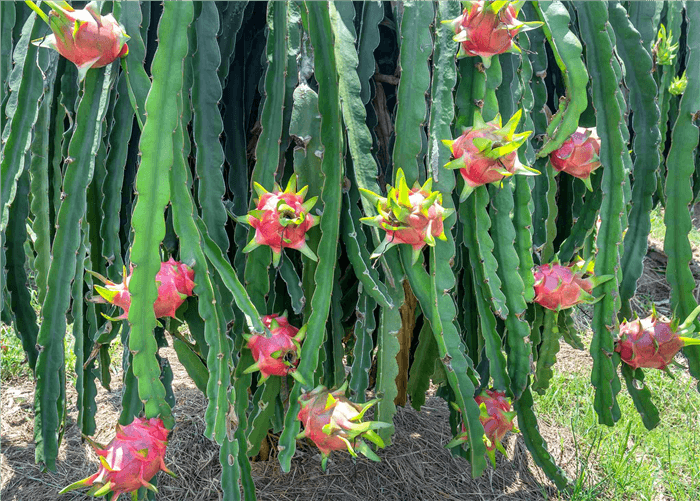
Flower Blooms Once at Night - Dragon Fruit Cactus
- USDA Zones: 9-11
- Size: 10-15 feet tall x 3-5 feet wide
- Bloom Time: Spring through fall
Growing Conditions: Full sun; well-drained soil; moderate watering
How to Make Night Flowering Plants Bloom?
To help your night-flowering plants bloom at night, consider the following tips.
Light
Most night flowering plants need bright indirect light during the day to bloom at night. Some flowers like Moonflower and Queen of the Night thrive in full sun. Therefore, ensure they get at least 6 hours of sunlight daily or put them under LED grow lights.
Temperature and Humidity
Some night flowering plants, like the Queen of the Night, thrive in warm, humid conditions. You can mimic their native habitat with a plant humidifier, especially if you live in a dry area
Soil
Use well-drained soil to prevent waterlogging, which can lead to root rot. Adding peat moss, perlite, or orchid bark mix can improve soil quality.
Watering Frequency
Keep the soil evenly moist, especially during the growing season. Water deeply to encourage healthy root growth. For plants like the Queen of the Night, allow the top two inches of soil to dry out before watering.
Fertilizer
Feed your plants with a balanced fertilizer during the active growing season to promote healthy growth and abundant flowering. For the Queen of the Night, use phosphate-potassium fertilizer before and after blooming and nitrogen fertilizer during the seedling stage.
Conclusion
In conclusion, flowers that bloom at night offer a unique and enchanting experience for gardeners or nature lovers. These blossoms at night can always bring a sense of magic and tranquility to the evening hours. From the fragrant Moonflower to the exotic Tuberose, each plant adds a touch of beauty and charm to the garden. By incorporating these 10+ night flowering plants into your landscape, you can create a serene and captivating environment that thrives after dark. Whether you’re looking for a romantic setting, a peaceful retreat, or simply a unique gardening experience, these nocturnal beauties are sure to delight and inspire. Embrace the allure of the night and let your garden come alive with the enchanting blooms of night flowering plants.













